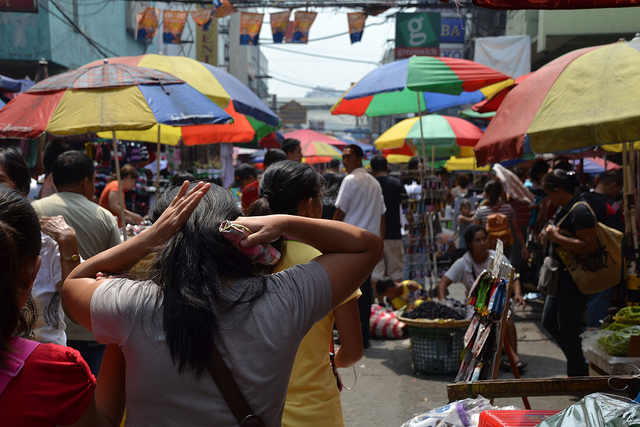Health
DOH cautions public vs. heat stroke

The Department of Health (DOH) is reminding the public to observe meaures against heat stroke as temperatures continue to rise nowadays. (Photo by shankar s./Flickr, CC BY 2.0)
MANILA — The Department of Health (DOH) is reminding the public to observe meaures against heat stroke as temperatures continue to rise nowadays.
“Too old and too young are specially at risk of developing heat stroke,” said DOH Secretary Francisco Duque III in an interview with reporters on the sidelines of his rounds in some hospitals in Quezon City earlier this week.
Based on the DOH Health Advisories, heat stroke is the most severe form of heat illness “when the body overheats and cannot cool down.”
When heat stroke happens, the body cannot “take off excessive heat by sweating because of dehydration and/or humid environment.”
Duque said that everyone should know how to be protected against heat stroke and other heat-related illnesses because of their debilitating effects on the body.
As an advice, Duque said that avoiding direct exposure from the heat of the sun is a way to prevent heat exhaustion.
These can be done by bringing some protective stuffs against the heat of the sun such as umbrella, cap and even fans that can help lessen the excessive heat.
Wearing light and cool clothings is also advised and most importantly bringing clean drinking water and keeping oneself hydrated.
He added that heavy activities that are usually done when the heat of the sun is at its peak should be scheduled when its cooler or if possible in cool area.
“It is also important to know some ‘warning signs’ so that immediate preventive measures could be applied,” he said.
Heat stroke is characterized by warm, flushed skin, faintness, dizziness, weakness, headache, very high fever of 41 degrees Celsius, rapid heartbeat, convulsion and unconsciousness.
“During very hot and humid weather, one should limit the amount of time spent outdoors; drink plenty of water; avoid tea, coffee, soda and alcohol; wear a wide-brimmed hat and long-sleeved clothing when outdoors,” the Health Chief said.
Some immediate measures for people who have heat stroke manifestations include moving them to a shady spot or indoors and have them lie down with legs elevated.
The clothes should be removed and then apply cool water to the skin and fan them.
Ice packs should be applied to the armpits, wrists, ankles and groin.
Since heat stroke is considered as a medical emergency, the agency also advised patients to be immediately brought to the hospital after applying emergency measures.





















